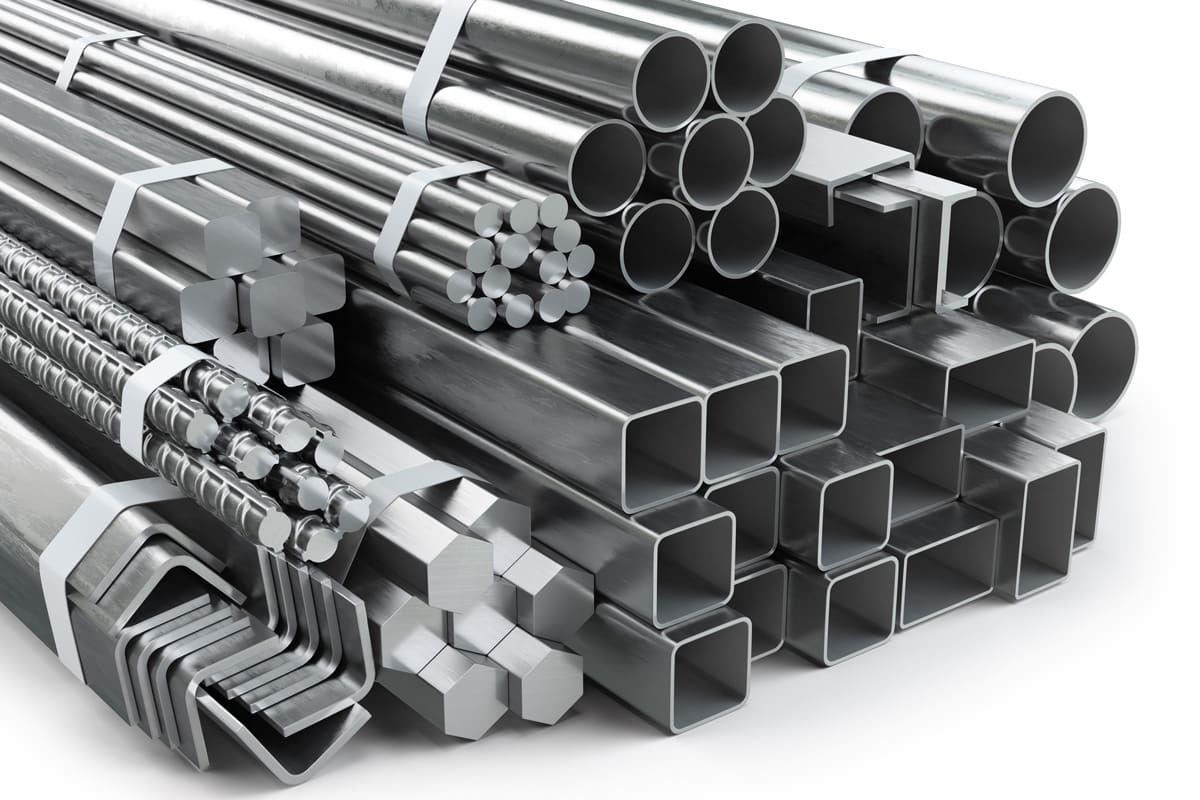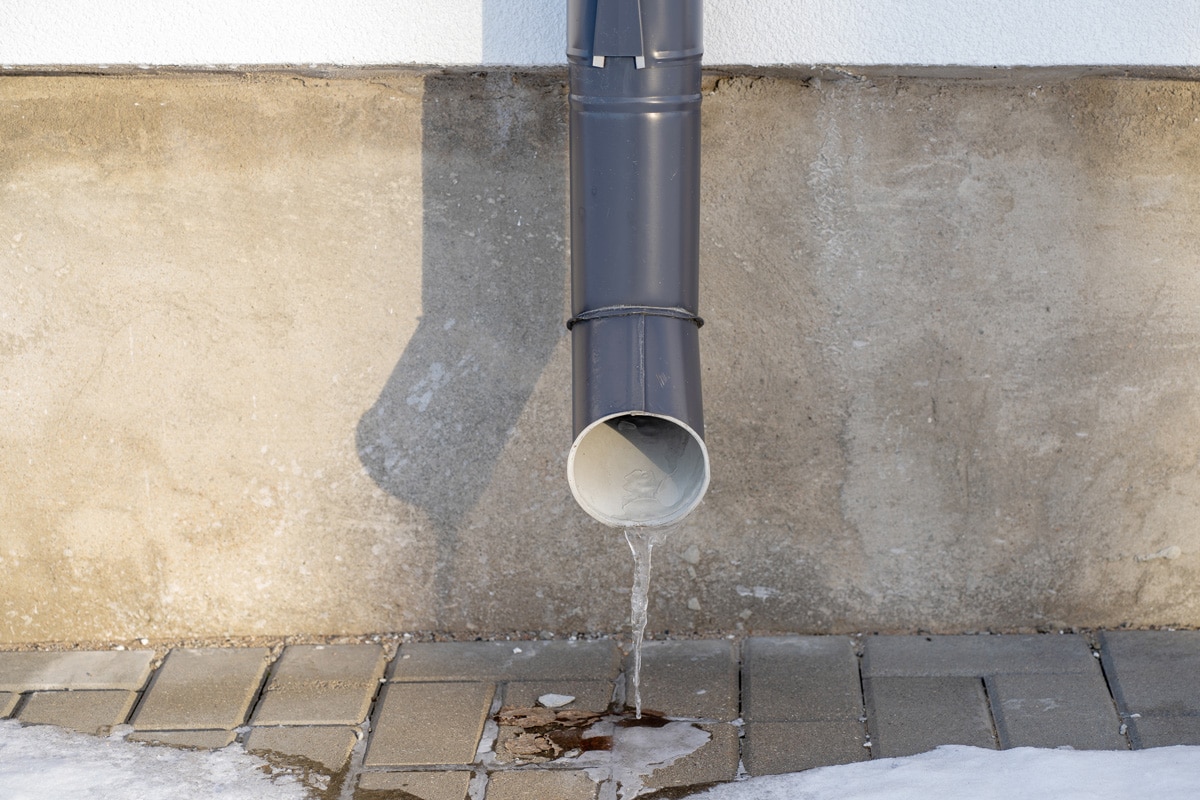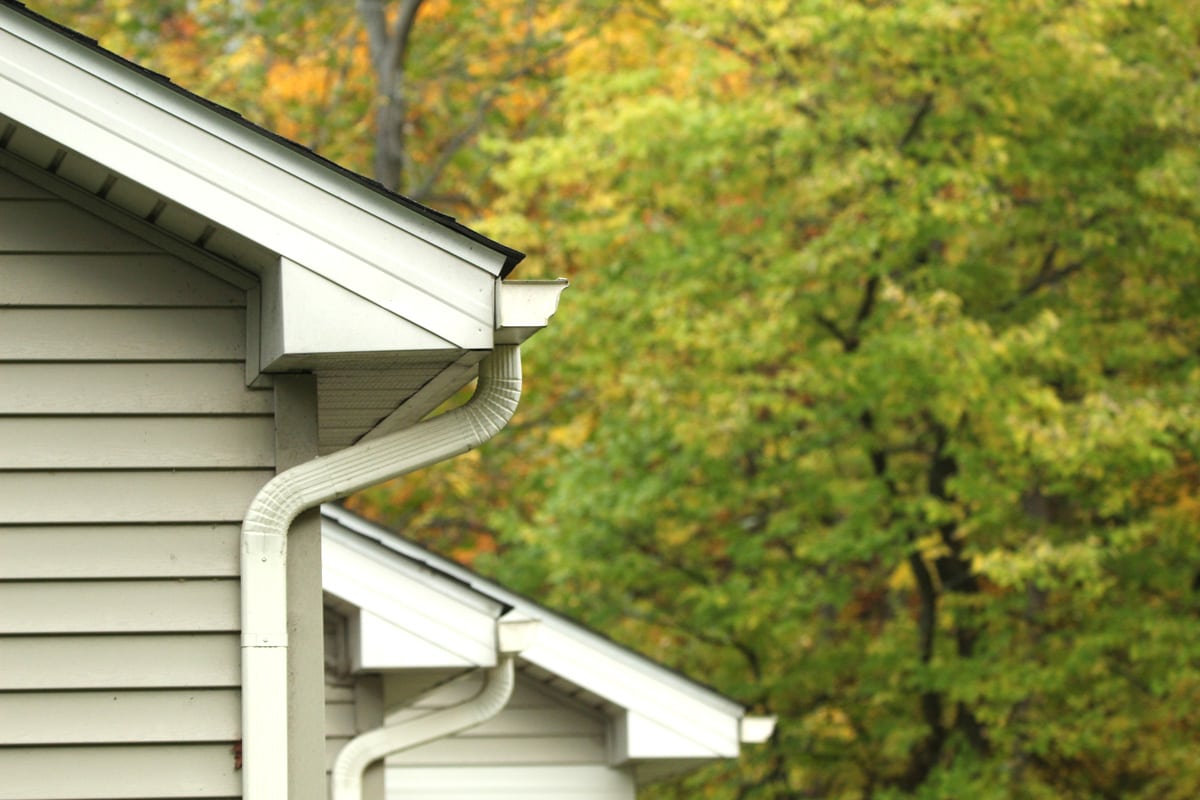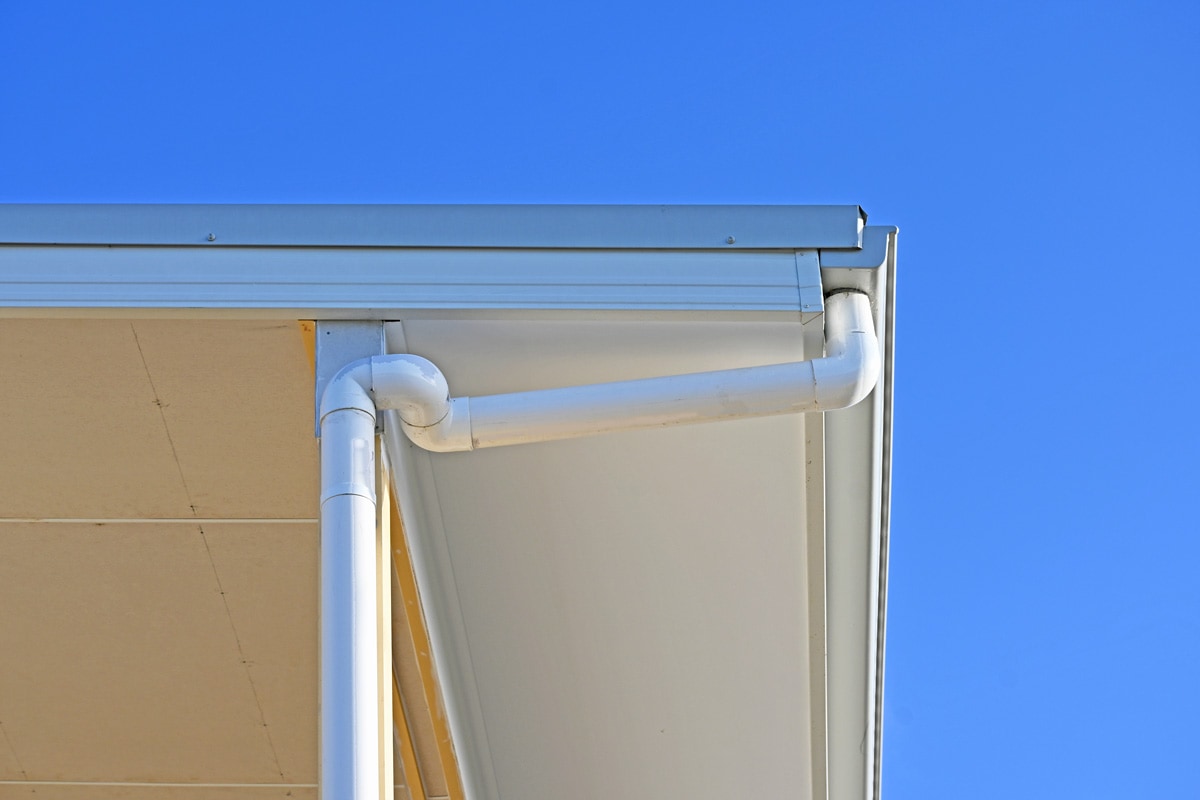The exterior beauty of your house is one thing that easily catches the eye of your visitors. Surely no homeowners want this defining moment to be ruined by a pipe clearly showing.
It can be challenging to think of ingenious ways to hide them from view, so how exactly can you pull it off? Wonder no more; we've done some digging and have a few ideas to share!
You can use various ways to conceal your exterior drain pipes. Among them is covering your pipes with wooden boxes, decorating them with plants, or hiding them with steel covers.
Also, consider reviewing your local building code for a better understanding and further details on installing them.
Though hiding your exterior drain pipe can help safeguard its structural stability. However, remember that a correct setup is necessary since these pipes are susceptible to moisture buildup or damage.
There's still so much knowledge we will share with you, so continue reading!
![A white painted drain pipe on the house exterior, How To Hide Exterior Drain Pipes? [Inc. With Boxes, Plants, & More]](https://hvacseer.com/wp-content/uploads/2022/08/How-To-Change-Coway-Airmega-Filter-1.png)
What Are Some Ways To Hide External Drain Pipes?
There are plenty of different ways of concealing outside pipes; many are simple and affordable. Since you can't remove the pipes, use innovative techniques to hide them like a natural part of your home design.
Here are some easy methods to hide your exterior drain pipes:
Build Wooden Boxes Around The Pipes
Building wooden boxes around your exterior drain pipes can effectively hide them. Additionally, they give your exterior a more rustic elegant appearance.
It can also protect the pipes to keep animals and vermin out.
You won't have to spend much money on these wooden boxes. The hardware store has a large selection of pre-cut wood that you can buy.
Steel Drainpipe Covers
Another crucial reason to hide your exterior drain pipes is to prevent burglars from entering your properties. An opportunist robber can use it as a ladder to access your properties.

If your house has an upper story, you should cover your outdoor downpipe with a steel drainpipe cover—an opportunist robber who can easily use the open drainpipe to enter your upper-story window.
Use Exterior Fixtures
Easy concealment beneath existing garden fixtures is one of the easiest things to hide outside pipes. However, this particular option might only work if the location of the pipes is on low ground.
Potted plants, mini fountains, or birdhouses are good options to hide your exterior pipes.
Moreover, this will offer your outdoor drain pipes extra protection from playful children or animals that might accidentally damage them.
Paint The Exposed Pipes
You may paint your outside pipes that are catchy to people's eyes. The same shade as the front of your house if you want them to blend in.
This simple technique will make it better for some eyes to take its attention.
In some cases, if you want to blend it into your grass, paint it green. In contrast, if you have mulch with flowers, paint the exterior pipe brown.
Cover The Pipe With Plants
One quick fix you'll find to hide your exposed pipes is to cover them with plants. Its natural greenery ambient can provide brightness to your outdoor area and turn an eyesore into a cleaver design.
Real or fake leafy vines spreading over the pipes might improve the appearance of your house. Furthermore, it gives the outside pipe a fanciful appeal instead of an industrial appearance.
You might use a hardy dianthus plant and stone orpine for low-lying outside pipes. However, remember that some plants will not do well with outside pipes.
What Trees/Plants Should I Avoid Using To Cover Exterior Drain Pipes?

Sometimes, you seek what's the best solution to hide your exterior pipes without looking if it is effective or not. Other trees or plants constantly seek a good water source or need more room to keep growing.
Thus since your pipes are the nearest water source, they may somehow puncture your drainage system or the pipes directly. These invasive plants are posing more threat to those significantly old piping systems in the early 1900s.
Use this checklist below to identify what are those notoriously plumbing-damaging trees:
- Oak trees
- Birch trees
- Citrus trees
- Poplar trees
- Willow trees
- Magnolia trees
Here are the common damaging plants we've listed below:
- Ivy plants
- Boxwood shrubs
- Holly bushes
NOTE: Follow our checklist to avoid serious and costly repairs to your exterior drain pipes in the future.
How Do You Paint PVC And Metal Pipes?
Polyvinyl chloride (PVC) is challenging to paint as acrylics, latex, epoxy, and water-based paints will not adhere or dry easily. Choosing special paint products made just for PVC and polymer pipes is crucial.
Before you start painting your PVC and metal pipes, ensure to wear these gears for safety purposes:
- Mask
- Gloves
- Safety goggles
Kindly follow our detailed steps below to paint your PVC pipes properly:
- First, clean the PVC pipe using a cleaning solution with ammonia to remove any dirt or debris.
- Sandpaper the pipe surface and use a cloth or tower to make it smooth and clean.
- Place the pipe on top of a wide flat board to avoid spraying the surrounding areas.
- Start spraying your PVP pipes evenly and neatly.
Below are the easy steps for painting metal pipes:
- If the pipes you're going to use are new or dirty, you should also clean them before applying the paint.
- You can use a soap or any cleaning agent you like and dry it properly.
- Once it dries out, dip a rag cloth with vinegar to help the primer effectively bond to your metal pipe.
- After the primer is completely dry, you can now apply the first coat.
- Sandpaper it to ensure there's no excess paint left on the metal pipes surface before applying your final coat.
Pro tips! You must exercise caution when applying these paints because they are often only available in spray-can formulations.
Why Do You Need To Insulate Your Exterior Pipes?

Covering your exterior pipes also offers practical benefits that can help you prevent some problems with your piping system. Generally, insulation should be thick enough to act as a protective cover from climate-damaging elements.
A ThemalJacs547® is ideal for piping insulation. It has a high fiber density and is best for thermal control. You should consider that having proper insulation is the key to your drain pipe functioning correctly.
Find this waterproof tape on Amazon.
This effectively prevents the pipes from icing, especially during the winter months. Moreover, it can eliminate the pipe's condensation development when the humidity is extremely high.
Insulating your pipes will not hurt your pocket as this only costs you around $10-$15.
Can You Install A Pipe On An Exterior Wall?
Ideally, it's best to avoid installing your pipes within exterior walls. Mind that, as much as you want to hide your pipe within the walls.
Following your local building installation code is also critical to avoid damaging your piping system.
If it's necessary to set your pipe inside the exterior walls, ensure to insulate it well. Besides, enough cavity insulation is essential behind the pipes.
The wall cavity should also be air-tight to help stop cold air from circulating the pipes and causing freezing issues. Insulating all hot and cold water supply pipes can help you save energy by reducing heat loss through the pipework.

According to research led by the DOE's Building America program, allocation heat loss in the area where the pipe isn't receiving proper insulation, particularly hot water pipes, can vary from around 16% to 23%, depending on the region.
To Wrap Things Up

Hiding your exterior drain pipes may seem like such an easy task. However, it involves several factors not only to maintain your house's elegant appeal or design but is complying with ideal processes.
Throughout this post, we've covered the other vital methods to hide your exterior pipes well using innovative techniques. You also know that planting any plants you like also correlates with proper procedures to avoid issues.
Because some trees or plant species will severely damage your pipes in the long run, we hope you can now proceed to hide your outdoor pipes depending on your preferred looks and designs.
Made it this far? Please read our other informational posts below!


